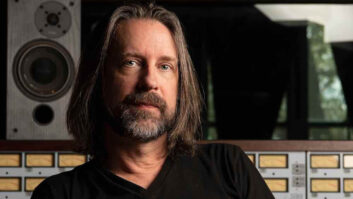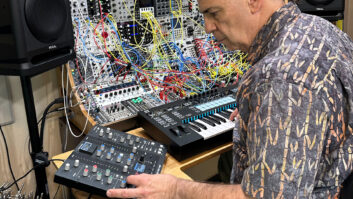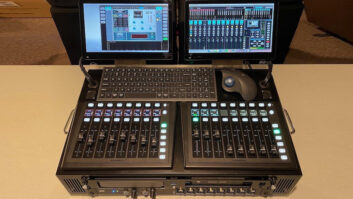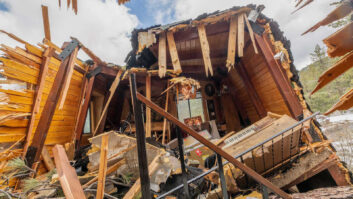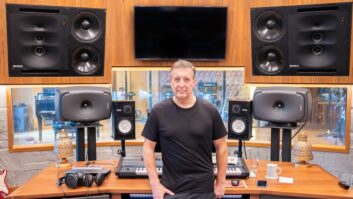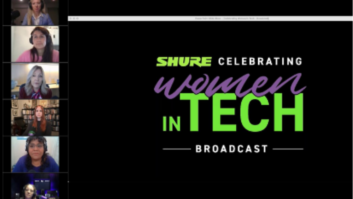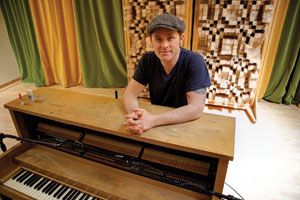
It was one of those right place, right time situations. Chris Dugan and his partner, Willie Samuels, had been recording local punk, metal and assorted bands for a couple of years at their Nu-Tone Studio in Pittsburg, Calif. (east of Berkeley/Oakland), when their paths crossed that of the best-known rocker in the area—Billie Joe Armstrong of Green Day. Armstrong had (and still has) his own record label, Adeline Records, and in 1999 he tapped Dugan to come to his home studio to record a few songs for a band he was producing, The Criminals. The resulting album, Burning Flesh and Broken Fingers, delivered 14 blazing punk songs in just 21 minutes, including “An Angry Ouija Board Has Sent Us to Destroy the City of Berkeley.” Yeah!
Dugan has been in Green Day’s orbit ever since. He and Samuels worked with the band on some songs that came out on the 2002 B-sides/rarities album Shenanigans, and they established a Nu-Tone room in Studio 880 in Oakland, where Green Day often recorded and which the band eventually bought and turned into their own JingleTown facility. Dugan did some recording for American Idiot, and then was chief engineer on 21st Century Breakdown, the group’s recent trilogy—Uno! Dos! and Tre!— and the just-released Billie Joe and Norah Jones album, Foreverly (a remake of an old Everly Brothers record). He has also done photography and videography for Green Day. These days, Dugan spends nearly all his time helping run JingleTown, which is now a commercial studio, as well as Green Day’s domain. Yet he and Samuels, who now works full time at Studio Trilogy in San Francisco, still own Nu-Tone in Pittsburg—now run by Scott Goodrich and Ben Hirschfield—and still drop by to help out on occasion.
Dugan grew up in the Pittsburg/Antioch area of the East Bay, where he played in bands (he’s a drummer) but also was always interested in recording, eventually finding a school. “Los Medanos Community College in Pittsburg has a big music department, and they’ve also had a recording program for years, with a really nice studio. I was there from 1995-97,” he says. That’s also where he met Samuels.
The two started Nu-Tone with an eye toward working with the many punk and metal bands who were sprouting up in the area the mid- and late-’90s. “Willie already had a little studio,” Dugan says. “I had a Fostex 8-track 1/4-inch reel-to-reel and Willie had the 1/2-inch Tascam version. Then I came across a deal on an ADAT, and I jumped on it. He sold his [Tascam] and he bought two. ‘We’ll put ’em all together and have 24 tracks!’ It was amazing. So that’s how it began—we started as a 24-track ADAT studio. Eventually we were able to buy an Otari MX-80 tape machine off Skywalker Ranch, and that changed everything.”
At first, their clientele was “mostly friends. Willie was in bands in the [nearby] Concord-Walnut Creek area. I was in bands in the Antioch-Pittsburgh area, so when we teamed up, all of our friends ended up coming in. Of course, a year later half the bands have broken up and the four members of each of those bands have formed four other bands, so it was easy to get work for the studio,” he says with a laugh. “It was a cool place, and people seemed to like the vibe. We were really, really cheap at the time, too, which is what brought everyone in.”
Asked if he was heavily influenced by the recording aesthetic of Green Day and other punk and rock outfits of that era, Dugan says, “Yes, but I always felt like I looked back at more classic albums and said, ‘This is how things should be,’ because I figured these were the guys who started it. So when I’d listen to The Beatles, I’d listen carefully because they were being innovative and breaking the mold. Or I’d listen to a Zeppelin record—‘That’s a room sound?’ or, ‘How did they get that drum sound?’ Now, of course, people can do what they did technically with what’s in their bedroom studios. But that’s where I would draw from.”
And, of course, Green Day has always made really good-sounding records; theirs is hardly a DIY punk sound. “That’s right,” Dugan says. “It always caught me a little off-guard how good their records sounded. They were really into recording—more so than any band I’d ever recorded. They certainly knew the process and they knew what sounds good, while a lot of the bands I was working with were like, ‘Sounds okay to me, can we party now?’ By the time I started working with them, they’d been through a lot. But it’s been a great experience. They’ve pushed me a lot—‘Can we make this sound better?’ ‘Um, okay, let’s try this.’ We experiment a lot, which is really fun.” These days, working at JingleTown, Dugan gets to work on top-of-the-line gear, including the SSL 9000J in Studio B and the vintage Neve 8068 that recently went into Studio A.
“From my perspective,” he says, “a big part of engineering is all about gear, handling the technical stuff. Back in 1997, Willie and I would look at this Mix magazine on vintage gear and that was like our guideline: ‘That’s a U 47. That’s a Neve module.’ We grew up drooling over and trying to figure out all that stuff. And even today, I’ll check out new things, of course, but hardware-wise, I’m still more drawn to the classic gear.”

